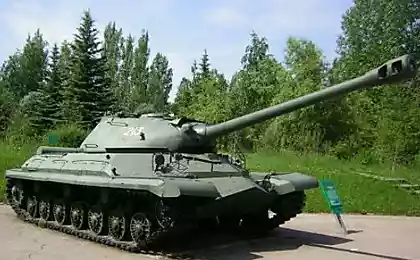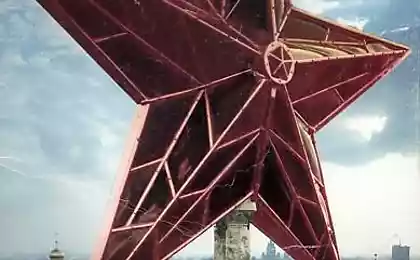566
Secrets of the Leaning Tower of Pisa
Leaning Tower of Pisa - bell tower of the cathedral in Pisa (Italy), located on Cathedral Square, often called the "Square of miracles».
The famous "falling" tower (Torre Pe'ldente) - this is the bell tower (Campanile) cathedral in Pisa, some rare on the beauty of the architectural ensemble, which consists, in addition to the bell tower and the cathedral, even from the chapel christening (Baptistery) and the cemetery. If "falling" tower does not heel and stood vertically, like the rest of the tower in the world, thanks to its limited, probably only a narrow circle of architects and historians. Thanks also to its constructive defects, it is known worldwide.
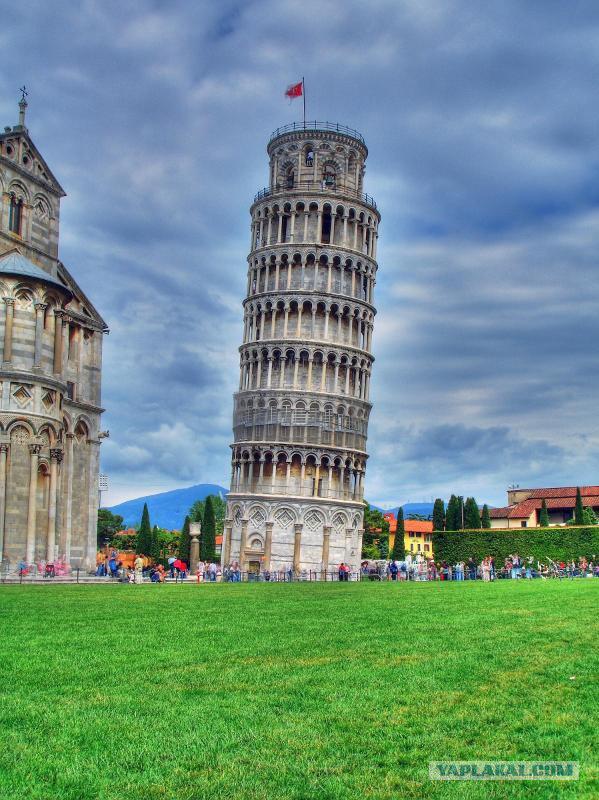
Work on the construction of campanile began in 1174. It is believed that the architect had been Bonanno Pisano and Guglielmo da Innsbruck. The foundation of the bell tower was built at a depth of three meters to the "cushion" of stone. Construction works were suspended in 10 years, when it was completed the construction of the third ring Colonnade, as the first signs of the inclination of the building. This was due to land subsidence, causing subsidence of the foundation of 30-40 cm and a deviation from the vertical tower 5 cm. In 1275 work resumed again under the guidance of architect Giovanni di Simone, who was trying to straighten the axis of the building. The height of the bell tower rose over three floors and has reached 48 m: in 1284 were completed six floors with balconies, galleries. Deviation of the tower at that time was more than 90 cm. In the early 14th century. Colonnade at the sixth ring in large openings in it were installed bells. Above the sixth tier tower architect Tommaso di Andrea Pisano built the gallery with a belfry (1350-1372). At this time, the deviation from the vertical tower is 1, 43 m.

Today, when you look at the tower from the bottom, or even more so, he climbs on the upper platform of 294 steps, with a sinking heart, feeling along the way, as the whole building is about to be filled up on one side, one can only wonder how and why it has not yet fell. Every year, the angle of inclination is widening, and anxiety for its destiny is increasing. At the beginning of this century, the vertical misalignment was 4, 3 meters, today it is already 4 and 6 meters
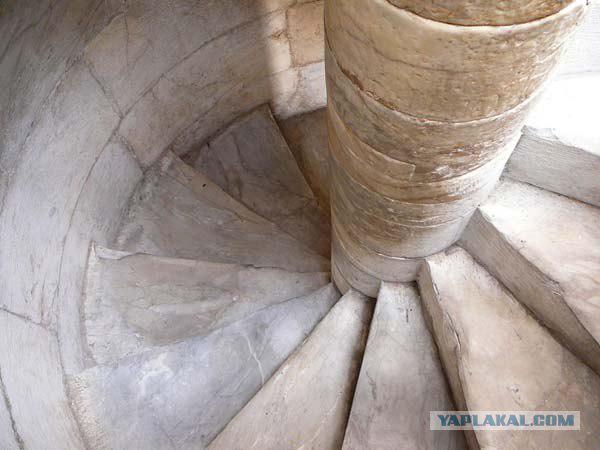
After the bell tower of the Cathedral of Pavia collapsed in 1989, Consorzio Progetto Torre di Pisa (Leaning Tower of Pisa Project Consortium) commissioned engineers to stabilize the "fall" Tower. Due to the fact that the tower bent in different directions early years, it is slightly curved, like a banana. Engineers are working on the foundations of the tower more than on the structure itself, hoping to return to the top of the tower about 20 cm back. But this means that the 800-year-old tower will remain "the incident."
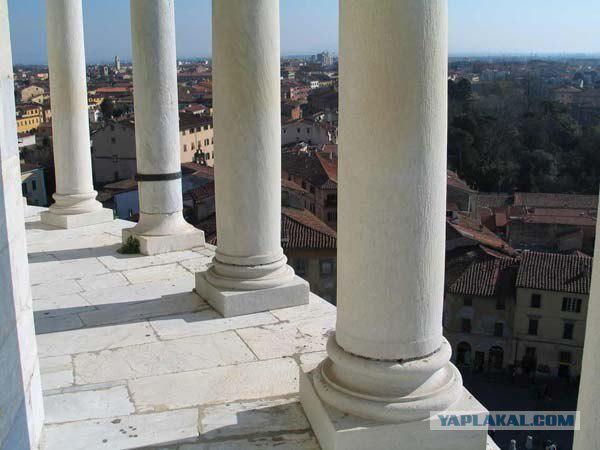
Work on the preservation of the tower (solving the problem of inclination) began during construction. The first panel of experts worked on it in 1298, inspections were carried out in 1396, in 1550, repeated in the 18-19 centuries. Before our time working on it for 15 commissions. In 1935, to make the foundation of the tower waterproof, it introduced a liquid cement. In 1992, at the height of the first galleries under the eaves of the monument were placed 18 steel rings covered with special plastic that had to prevent further subsidence of the building. For the temporary strengthening of the foundation on the north side put 600 tons of lead, which in 1993 was moved to the platform, connected to the tower by means of hoops.

Source:
The famous "falling" tower (Torre Pe'ldente) - this is the bell tower (Campanile) cathedral in Pisa, some rare on the beauty of the architectural ensemble, which consists, in addition to the bell tower and the cathedral, even from the chapel christening (Baptistery) and the cemetery. If "falling" tower does not heel and stood vertically, like the rest of the tower in the world, thanks to its limited, probably only a narrow circle of architects and historians. Thanks also to its constructive defects, it is known worldwide.

Work on the construction of campanile began in 1174. It is believed that the architect had been Bonanno Pisano and Guglielmo da Innsbruck. The foundation of the bell tower was built at a depth of three meters to the "cushion" of stone. Construction works were suspended in 10 years, when it was completed the construction of the third ring Colonnade, as the first signs of the inclination of the building. This was due to land subsidence, causing subsidence of the foundation of 30-40 cm and a deviation from the vertical tower 5 cm. In 1275 work resumed again under the guidance of architect Giovanni di Simone, who was trying to straighten the axis of the building. The height of the bell tower rose over three floors and has reached 48 m: in 1284 were completed six floors with balconies, galleries. Deviation of the tower at that time was more than 90 cm. In the early 14th century. Colonnade at the sixth ring in large openings in it were installed bells. Above the sixth tier tower architect Tommaso di Andrea Pisano built the gallery with a belfry (1350-1372). At this time, the deviation from the vertical tower is 1, 43 m.

Today, when you look at the tower from the bottom, or even more so, he climbs on the upper platform of 294 steps, with a sinking heart, feeling along the way, as the whole building is about to be filled up on one side, one can only wonder how and why it has not yet fell. Every year, the angle of inclination is widening, and anxiety for its destiny is increasing. At the beginning of this century, the vertical misalignment was 4, 3 meters, today it is already 4 and 6 meters

After the bell tower of the Cathedral of Pavia collapsed in 1989, Consorzio Progetto Torre di Pisa (Leaning Tower of Pisa Project Consortium) commissioned engineers to stabilize the "fall" Tower. Due to the fact that the tower bent in different directions early years, it is slightly curved, like a banana. Engineers are working on the foundations of the tower more than on the structure itself, hoping to return to the top of the tower about 20 cm back. But this means that the 800-year-old tower will remain "the incident."

Work on the preservation of the tower (solving the problem of inclination) began during construction. The first panel of experts worked on it in 1298, inspections were carried out in 1396, in 1550, repeated in the 18-19 centuries. Before our time working on it for 15 commissions. In 1935, to make the foundation of the tower waterproof, it introduced a liquid cement. In 1992, at the height of the first galleries under the eaves of the monument were placed 18 steel rings covered with special plastic that had to prevent further subsidence of the building. For the temporary strengthening of the foundation on the north side put 600 tons of lead, which in 1993 was moved to the platform, connected to the tower by means of hoops.

Source:


